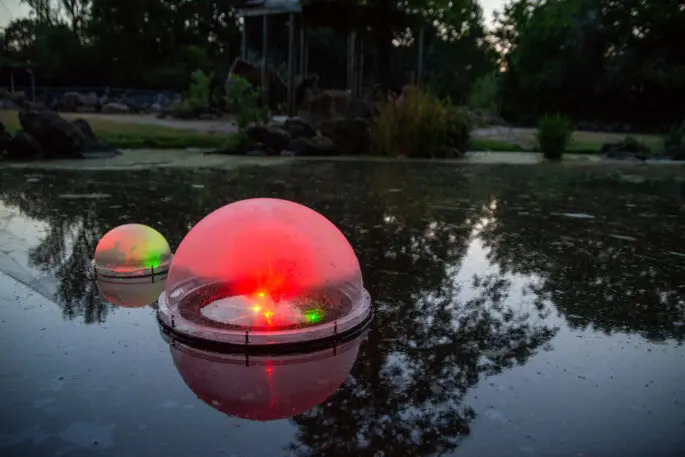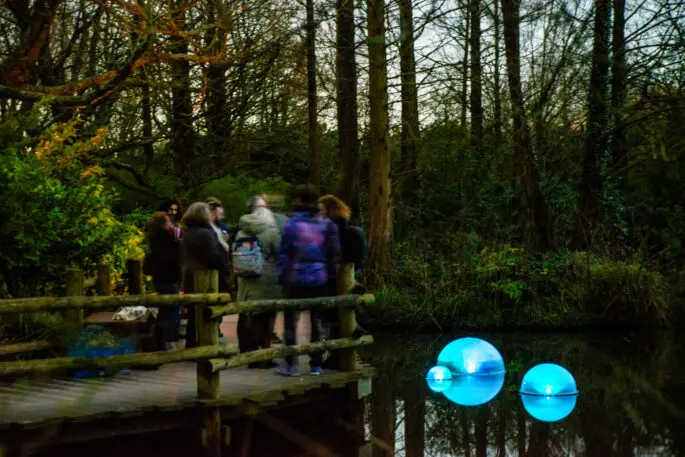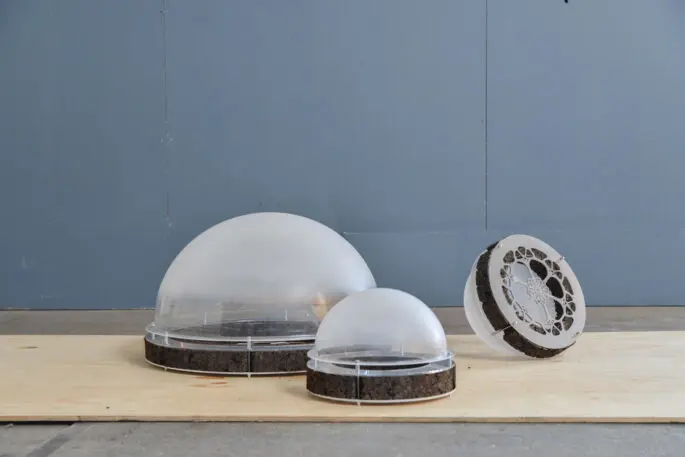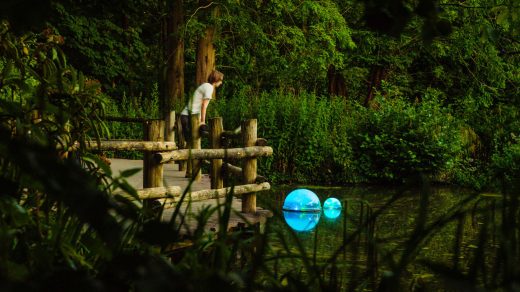These glowing orbs can tell you if water is clean or polluted
These glowing orbs can tell you if water is clean or polluted
Dutch designer Ermi van Oers has created Pond, a trio of floating lamps that can translate water quality into a spectrum of colors.
Over the past nine months, those visiting the camels at the Rotterdam Zoo in the Netherlands may have noticed three strange, glowing domes floating at the surface of a lake. To the unsuspecting, these domes probably looked like an art project, but they are, in fact, a sneaky communication tool.
The domes were created by product designer Ermi van Oers for a project called POND (Power Of Nature-based Design.) The idea is “to give water a voice,” as the designer puts it, and create a dialogue between us, humans, and the natural world. “Often, we find it difficult to care for nature because we cannot communicate with it, we have no clue what it needs,” says van Oers, who runs a biodesign studio called Nova Innova. “If we see an emotion, we become empathetic and we can take care of it.”

In this case, “emotion” equates to health. If the water is clean—aka happy—an underwater LED light mounted inside the dome will light up in a pulsing blue light. If the water is polluted—aka angry—it will turn red and the light will look “slow and tired.” The responsive objects can therefore translate the water quality in real-time and in ways that are infinitely more engaging for the public than the typical assortment of probes, nets, gauges, and various instruments that experts use behind the scenes.

By virtue of their concave shape and the underwater LEDs, the domes act as magnifying glasses that shine a spotlight on any creature swimming inside them. They can also measure the water’s pH levels, temperature, conductivity, dissolved oxygen, and turbidity (how clear the water is), and then translate the data into a gradient of colors depending on the ecological status of the water. To determine the varying levels of cleanliness, van Oers consulted several Water Boards in The Netherlands and eventually replicated the framework they use to measure water quality.

But where things get even more interesting is where the electricity comes from, which is the water itself. To power the sensors and the LED lights, Van Oers used something called Microbial Fuel Cell Technology, whereby energy is generated by microbes found in the water. The trio of domes is connected to six microbial fuel cells (MFCs) that are made from carbon felt and ceramic and sit at the bottom of the lake. Much like batteries store and release energy through chemical reactions, these cells break down organic compounds and release electrons that are then captured and turned into electricity.
The idea to use microbes to generate electricity dates back to 1911, when the English botanist Michael Potter proved that microorganisms could generate a voltage and deliver current. The technology was then used in the 1960s as NASA experimented with turning organic waste into electricity on space missions. In more recent decades, MFCs have also been used in wastewater treatment plants to remove pollutants while generating electricity.
A major benefit is that this particular family of microbes, known as exoelectrogenic bacteria, can be found everywhere where there is organic matter, like wastewater, marine sediments, plants, soil, and organ waste. “It’s a really cool microbe,” says van Oers.

At the Rotterdam Zoo, the six MFCs can produce continuous light for about 30-80 minutes per day while measuring the water quality every hour. Van Oers programmed the domes to turn on at dusk, like a nocturnal bird that wakes up when the sun sets.
The point of the pilot wasn’t necessarily to measure the water quality but to study how efficient the domes are in a real environment. Still, van Oers did notice a change throughout the nine months. In the summer, she said the domes turned red because the lake was blanketed with algae blooms, which can suck up oxygen while decaying and harm aquatic life. In the winter, as the water quality improved, the domes often glowed blue-green.
Next up, van Oers wants to bring Pond to public spaces around the city. While she searches for the right location and partner in Rotterdam, she’s also in conversations with other cities in The Netherlands, including Utrecht, Eindhoven, and Amsterdam. “I think it would be cool [to see] how water quality differs between places and for people to see how their behavior can influence water quality,” she says.
ABOUT THE AUTHOR
Fast Company – co-design
(21)



